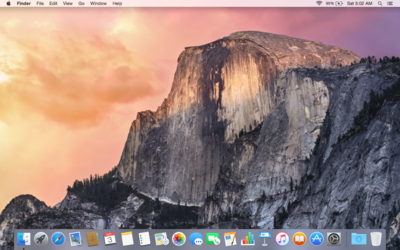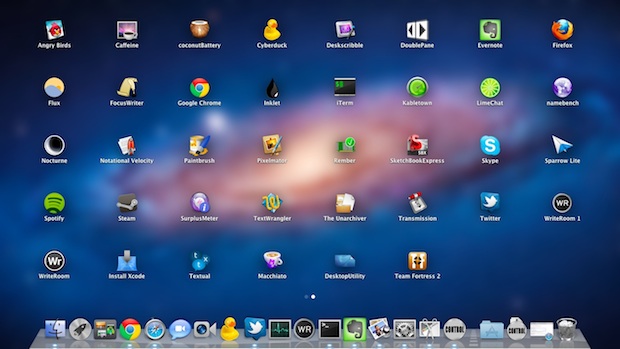If a prospective customer downloads your software onto Mac OS X 10.8 and it hasn't been signed, they will see a scary warning:
Not good. To run unsigned software they need to go into Mac OS X Preferences>Security & Privacy>General and change Allow applications downloaded from Mac App store and identified developers to Anywhere:
The Mac App Store makes it simple for customers to discover, purchase, and download your apps, and easily keep them updated. The Mac App Store on macOS Mojave and later offers editorial content that inspires and informs. Organized around the specific things customers love to do on Mac, along with insightful stories, curated collections,. Mac OS X Server 10.5 – also marketed as Leopard Server; Mac OS X Server 10.6 – also marketed as Snow Leopard Server; Starting with Lion, there is no separate Mac OS X Server operating system. Instead the server components are a separate download from the Mac App Store. Mac OS X Lion Server – 10.7 – also marketed as OS X Lion Server.
- Mar 22, 2016 How to Install Apps in Mac OS X. By David Eitelbach 22 March 2016. If you're fairly new to a Mac and want to be able to install applications, there are a couple of ways to do it.
- Global Nav Open Menu Global Nav Close Menu; Apple; Shopping Bag +.
Or they need to right/Ctrl click and see another scary warning. Double plus not good. This is the new Mac Gatekeeper system in action. Apple being Apple, Gatekeeper defaults to only allowing users to run software they have downloaded off the Internet if it has been signed. This could have a big effect on your conversion rate on Mac. So if you are shipping software for the Mac, you really need to sign it.
Apple fanboys will tell this is a sensible way for Apple to control software quality. A valid certificate shows that your software hasn't been tampered with and, if it turns out to be malware, Apple can revoke your certificate. The more cynical might see it as a way for Apple to exert even greater control over Mac developers than it already does, while simultaneously extorting $99 per year from each and every one of them. Make your own mind up on that one.
I have now managed to sign my table planner software, ready for its next release. I should have done it months ago. But I expected the process to be so tedious that it has taken me this long to get around to it. And it was every bit as mind-numbingly tedious as I expected trying to find a few useful nuggets amongst the acres of Apple documentation. I found some useful stuff in blogs, but it was quite fragmented. So I have thrown together these notes in the hope that it saves someone else a few hours going round in circles. Note that I am not currently submitting my software to the Mac App Store, so I don't cover that here. Also my software is developed in C++/Qt using Qt Creator, rather than Objective-C/Cocoa using XCode, and my approach reflects that.
1. Sign up for Apple Developer Connection ($99 per year). Doesn't matter if you already paid through the nose for a Windows authenticode certificate. Gatekeeper only accepts Apple certificates, so you have no choice. On the plus side, you do get other benefits, including downloading new OS upgrades for free.

2. You need Mac OS X 10.8 so you can test that your signing works. If you have an Apple Developer Connection subscription, you can download 10.8 for free (get a code from the ADC downloads area and using it in the Mac App Store). https://natisyma1981.wixsite.com/iowasoftware/post/bookends-12-5-5-reference-management-and-bibliography-software. I found the upgrade from 10.6 to 10.8 was surprisingly painless (Microsoft eat your heart out).
3. Request your Apple certificates and install them into your Keychain. You can do this from Xcode (instructions here). You may need to upgrade Xcode to a recent version. https://ameblo.jp/26crepreguekugs/entry-12652203702.html.
4. Use the codesign command line tool to sign:
- Every framework in your .app bundle
- Every plugin in your .app bundle
- Your .app file
I believe you can do this as part of your Xcode build. But I prefer a shell script. For example:
echo --sign frameworks --
codesign --force --verify --verbose --sign 'Developer ID Application: ' .app/Contents/Frameworks/QtCore.framework/Versions/4/QtCore
codesign --force --verify --verbose --sign 'Developer ID Application: ' .app/Contents/Frameworks/QtGui.framework/Versions/4/QtGui
codesign --force --verify --verbose --sign 'Developer ID Application: ' .app/Contents/Frameworks/QtNetwork.framework/Versions/4/QtNetwork
codesign --force --verify --verbose --sign 'Developer ID Application: ' .app/Contents/Frameworks/QtSql.framework/Versions/4/QtSql
codesign --force --verify --verbose --sign 'Developer ID Application: ' .app/Contents/Frameworks/QtXml.framework/Versions/4/QtXml
codesign --force --verify --verbose --sign 'Developer ID Application: ' .app/Contents/Frameworks/Qt3Support.framework/Versions/4/Qt3Support

2. You need Mac OS X 10.8 so you can test that your signing works. If you have an Apple Developer Connection subscription, you can download 10.8 for free (get a code from the ADC downloads area and using it in the Mac App Store). https://natisyma1981.wixsite.com/iowasoftware/post/bookends-12-5-5-reference-management-and-bibliography-software. I found the upgrade from 10.6 to 10.8 was surprisingly painless (Microsoft eat your heart out).
3. Request your Apple certificates and install them into your Keychain. You can do this from Xcode (instructions here). You may need to upgrade Xcode to a recent version. https://ameblo.jp/26crepreguekugs/entry-12652203702.html.
4. Use the codesign command line tool to sign:
- Every framework in your .app bundle
- Every plugin in your .app bundle
- Your .app file
I believe you can do this as part of your Xcode build. But I prefer a shell script. For example:
echo --sign frameworks --
codesign --force --verify --verbose --sign 'Developer ID Application: ' .app/Contents/Frameworks/QtCore.framework/Versions/4/QtCore
codesign --force --verify --verbose --sign 'Developer ID Application: ' .app/Contents/Frameworks/QtGui.framework/Versions/4/QtGui
codesign --force --verify --verbose --sign 'Developer ID Application: ' .app/Contents/Frameworks/QtNetwork.framework/Versions/4/QtNetwork
codesign --force --verify --verbose --sign 'Developer ID Application: ' .app/Contents/Frameworks/QtSql.framework/Versions/4/QtSql
codesign --force --verify --verbose --sign 'Developer ID Application: ' .app/Contents/Frameworks/QtXml.framework/Versions/4/QtXml
codesign --force --verify --verbose --sign 'Developer ID Application: ' .app/Contents/Frameworks/Qt3Support.framework/Versions/4/Qt3Support
echo --sign plugins--
codesign --force --verify --verbose --sign 'Developer ID Application: ' .app/Contents/Plugins/accessible/libqtaccessiblecompatwidgets.dylib
codesign --force --verify --verbose --sign 'Developer ID Application: ' .app/Contents/Plugins/accessible/libqtaccessiblewidgets.dylib
codesign --force --verify --verbose --sign 'Developer ID Application: ' .app/Contents/Plugins/bearer/libqcorewlanbearer.dylib
codesign --force --verify --verbose --sign 'Developer ID Application: ' .app/Contents/Plugins/bearer/libqgenericbearer.dylib
codesign --force --verify --verbose --sign 'Developer ID Application: ' .app/Contents/Plugins/codecs/libqcncodecs.dylib
codesign --force --verify --verbose --sign 'Developer ID Application: ' .app/Contents/Plugins/codecs/libqjpcodecs.dylib
codesign --force --verify --verbose --sign 'Developer ID Application: ' .app/Contents/Plugins/codecs/libqkrcodecs.dylib
codesign --force --verify --verbose --sign 'Developer ID Application: ' .app/Contents/Plugins/codecs/libqtwcodecs.dylib
codesign --force --verify --verbose --sign 'Developer ID Application: ' .app/Contents/Plugins/graphicssystems/libqtracegraphicssystem.dylib
codesign --force --verify --verbose --sign 'Developer ID Application: ' .app/Contents/Plugins/imageformats/libqjpeg.dylib
echo --sign app--
codesign --force --verify --verbose --sign 'Developer ID Application: ' .app
I do this in a build shell script that automates the whole process of creating a .dmg for download. I'm not sure if the order you sign the components in is important.
Note that:
- is the ID on your certificate (in my case 'Oryx Digital Ltd').
- For frameworks you sign the folder, not the file.
- Any changes to the .app bundle after signing may invalidate the signature (that is kind of the point).
5. Verify the signing of the .app file. For example:
codesign -vvv -d .app
6. Package your .app into a .dmg, .zip, .pkg or whatever other format you use to install it (I believe .pkg files might require additional signing with a different certificate).
7. Make sure your Mac OS X 10.8 machine is set to the default Gatekeeper setting.
8. Download your software onto Mac OS X 10.8 and check if the scary warning has gone away.
9. Pray that Apple doesn't decide to revoke your certificate at some point for an infraction, real or imagined.
Until you have released a signed version you can put up a warning with some simple Javascript, for example:
Further reading:
Qt related: Open up macbook pro.
Java related:
Thanks to Jonathan of DeepTrawl and Stephane of LandlordMax for some useful pointers.
************** Update **************
Apple Os X Applications 10.6
Things have changed again for Mac OS X 10.9/10.10. See this post for an update.
